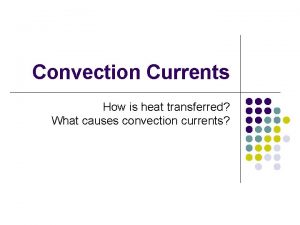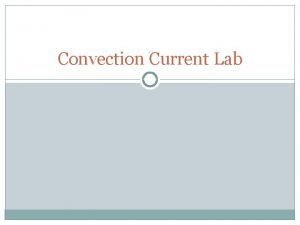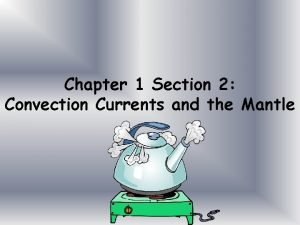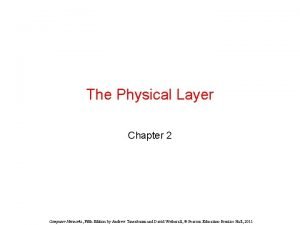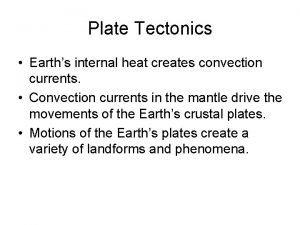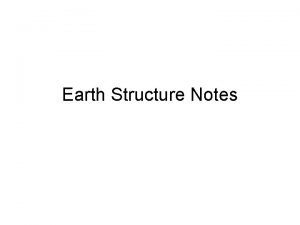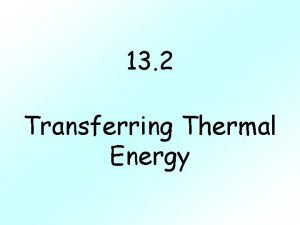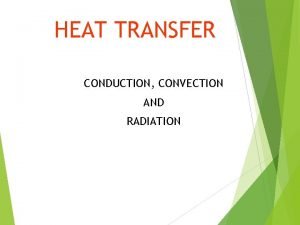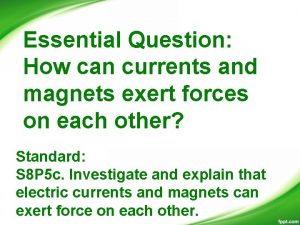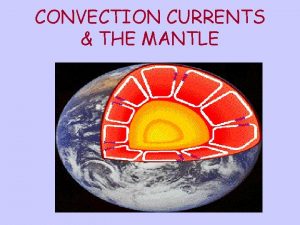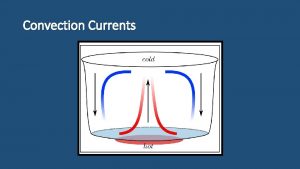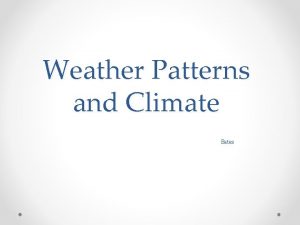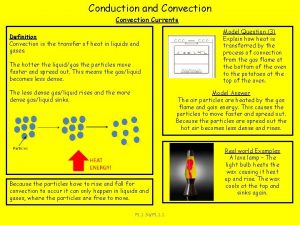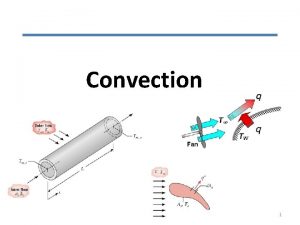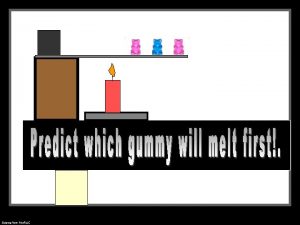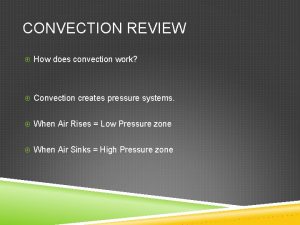Chapter 1 Section 2 Convection Currents and the













- Slides: 13

Chapter 1 Section 2: Convection Currents and the Mantle

Remember from Section 1: • The Earth’s molten outer core is nearly as hot as the surface of the sun. • This heat affects the mantle through heat transfer: The movement of energy from a warmer object to a cooler object.

Remember from Section 1: • Heat is always transferred from a warmer substance to a cooler. Example: holding an ice cube. • 3 types of heat transfer: radiation, conduction and convection.

Radiation, pg. 25 • Radiation is the transfer of energy through empty space. • Sunlight is radiation that warms Earth’s surface. • It takes place with no direct contact between a heat source and an object. • Other examples: Heat from a light bulb, heat from an open fire.

Conduction, pg. 26 • Conduction: The heat transfer by direct contact of particles of matter • Examples: Pot of water on the stove, thermometer.

Convection, pg. 26 • Convection is heat transfer by the movement of a heated fluid (liquid or gas) • Heated particles of fluid begin to flow, transferring heat energy from one part of the fluid to another. • Convection occurs between differences in temperature and density within a fluid. • Remember: Density is the amount of mass in a volume of a substance.

How Does Convection Work? • As a liquid/gas heats up, particles move faster and spread apart and occupy more space. Density decreases • As a fluid cools, particles move slower and settle closer together and density increases.

How Does Convection Work? • Warm/less dense fluid moves upward and floats over the cooler, denser fluid. **Think of the air– where do we find warm/cold air? ** • As it spreads out and cools it becomes denser and gravity pulls it back down where it is heated again.

How Does Convection Work? • There is a constant flow where the cooler liquid/gas continuously sinks to the bottom as the warmer fluids rise.

Convection • A convection current is the flow that transfers heat within a fluid. • This continues as long as heat is added. • Without heat, convection currents will stop as all material reaches the same temperature.

Convection in Earth’s Mantle, Pg. 27 • Earth’s mantle responds to heat. The heat source is the Earth’s core and the mantle itself. • Hot columns of mantle material rise slowly through the asthenosphere.

Convection in Earth’s Mantle, Pg. 27 • At the top of the asthenosphere, the hot material spreads out and pushes cooler material back towards the lower asthenosphere. • This cycle of rising and sinking has occurred inside the Earth for more than 4 Billion years!

Journal • Describe what it’s like to be water that is being boiled. – Where are you moving fast or slow – Are your particles close together or further apart (where does that happen) – How much space are you taking up. – When are you less dense or more dense and what happens? (Sink or rise) – Relate this idea to how convection is occurring in the mantle (asthenoshere)
 Compared with surface currents deep currents are
Compared with surface currents deep currents are Causes of convection currents
Causes of convection currents What is the heat source for convection currents
What is the heat source for convection currents Convection currents definition
Convection currents definition Convection currents definition
Convection currents definition Whats convection currents
Whats convection currents Scientists think that convection currents flow in earth's *
Scientists think that convection currents flow in earth's * Convection currents
Convection currents Rising convection currents
Rising convection currents What is the thickest layer of the earth
What is the thickest layer of the earth Convection currents
Convection currents Compare and contrast conduction and convection
Compare and contrast conduction and convection Ocean currents waves and tides
Ocean currents waves and tides How do currents and magnets exert forces on each other
How do currents and magnets exert forces on each other

